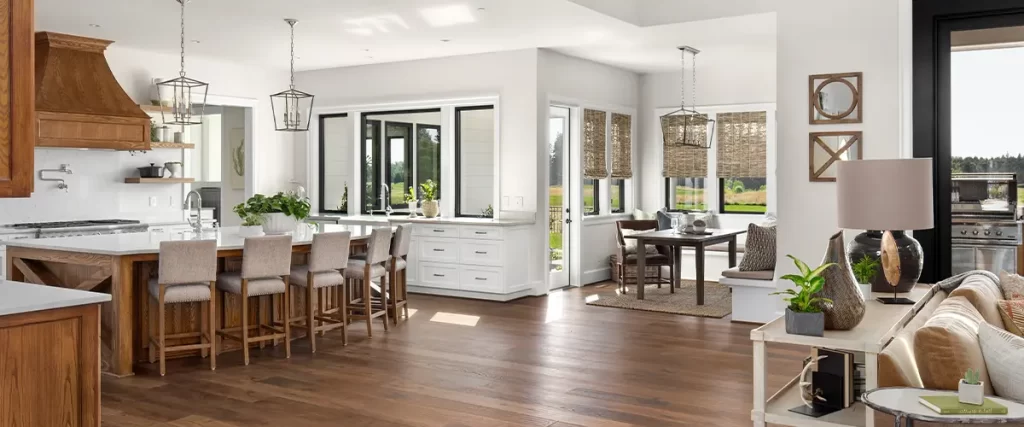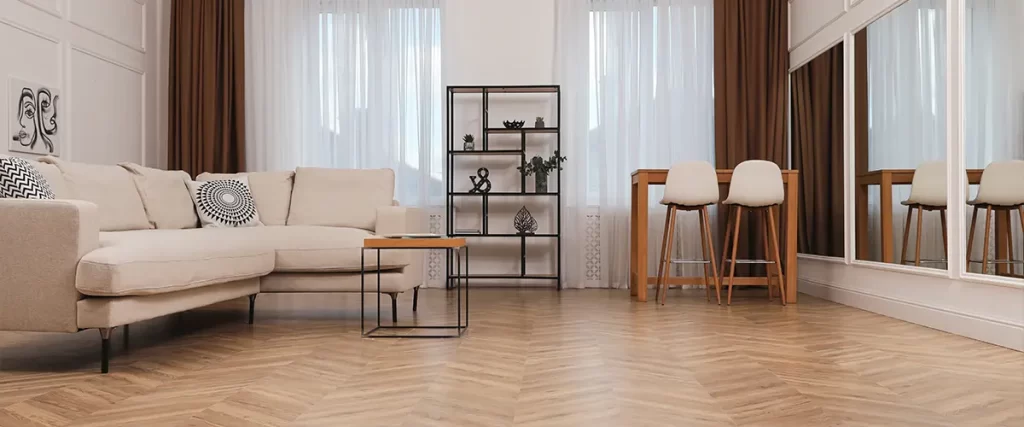Hardwood floors are a timeless and beautiful addition to any home, but what happens when they start looking worn out? Scratches, scuffs, or dullness can leave your floors looking less than their best. That’s when you face the big question: should you refinish your hardwood floors or replace them entirely?
Both options have their pros and cons, and the right choice depends on your floors’ condition, budget, and goals. Let’s break it down in simple, conversational terms so you can make the best decision for your home.

What Does Refinishing Hardwood Floors Mean?
Refinishing your hardwood floors involves sanding down the surface to remove scratches, stains, and imperfections. Then, a fresh stain and protective finish are applied to bring the floors back to life. It’s like giving your floors a makeover without replacing them.
When to Consider Refinishing:
- Your floors have surface-level damage like scratches or discoloration.
- You want to change the stain color or refresh the existing finish.
- The wood itself is still solid and in good condition.
How It Works:
- The floors are sanded to remove the old finish and smooth out imperfections.
- A stain is applied to achieve the desired color.
- A protective topcoat is added to seal the floors and protect them from wear and tear.
What Does Replacing Hardwood Floors Involve?
Replacing your hardwood floors means removing the old planks and installing new ones. This option is typically chosen when the existing floors are beyond repair or if you’re looking for a completely new look.
When to Consider Replacing:
- Your floors have deep damage, such as water stains, warping, or large gaps.
- You want to switch to a different type of wood or a new style altogether.
- The flooring has been refinished multiple times and the wood is too thin for another round.
How It Works:
- The old hardwood is removed and disposed of.
- The subfloor is inspected and repaired if needed.
- New hardwood planks are installed, stained (if unfinished), and sealed.
Comparing Refinishing and Replacing Hardwood Floors
Here’s a simple side-by-side comparison to help you weigh your options:
1. Cost
- Refinishing: Generally more affordable, costing $3–$8 per square foot on average.
- Replacing: More expensive, ranging from $8–$15 per square foot or more, depending on the type of wood.
2. Time
- Refinishing: Faster, typically taking 3–5 days, depending on the size of the area.
- Replacing: Longer, as it involves removing old floors and installing new ones. Expect 1–2 weeks for the entire process.
3. Aesthetic Flexibility
- Refinishing: Allows you to change the stain color and refresh the look of your current floors.
- Replacing: Gives you the freedom to choose a completely new wood type, width, or design.
4. Environmental Impact
- Refinishing: More eco-friendly since it reuses existing materials.
- Replacing: Generates more waste as old materials are discarded.
5. Longevity
- Refinishing: Extends the life of your current floors by 7–10 years with proper care.
- Replacing: Brand-new floors can last decades, depending on the wood type and maintenance.
Signs Your Floors Need Refinishing
Not sure if refinishing is the way to go? Here are some signs your hardwood floors might just need a little TLC:
- Surface Scratches: If the scratches don’t go deep into the wood, refinishing can restore the surface.
- Dull Finish: Floors that have lost their shine can be refreshed with a new coat of finish.
- Minor Stains or Discoloration: Light stains can usually be sanded out.
- No Major Damage: If the boards aren’t warped or rotting, refinishing is likely a good option.
Signs Your Floors Need Replacing
Sometimes, replacing your floors is the better choice. Here’s when to consider it:
- Deep Water Damage: Warped boards or widespread water stains usually require replacement.
- Significant Wear: If the floors have been refinished too many times, they may not have enough wood left for another sanding.
- Structural Issues: Loose, creaking, or uneven boards may indicate problems with the subfloor, which might require a full replacement.
- Style Update: If you’re ready for a completely different look, replacing is the way to go.
Benefits of Refinishing Hardwood Floors
Refinishing is a popular choice for a reason—it’s cost-effective and gives your floors a fresh look. Here’s why homeowners love this option:
- Saves Money: Refinishing costs significantly less than replacing.
- Keeps Original Floors: If you love the character of your existing hardwood, refinishing preserves it.
- Customizable Look: You can update the stain color or stick with the original shade.
- Eco-Friendly: Reusing your existing floors reduces waste.

Benefits of Replacing Hardwood Floors
Replacing your hardwood floors may be more expensive, but it comes with its own set of advantages:
- New Materials: You get the chance to choose a different wood type, width, or design.
- Fixes Major Issues: Replacing floors can address structural problems like warped or rotted boards.
- Increased Longevity: New floors give your home a fresh start and can last for decades.
Cost Breakdown: Refinishing vs. Replacing
Here’s a quick look at the average costs for both options:
| Service | Cost Per Sq. Ft. |
| Refinishing | $3–$8 |
| Replacing | $8–$15+ |
Keep in mind that costs can vary based on factors like the size of your space, the type of wood, and the condition of your current floors.
FAQs About Refinishing and Replacing Hardwood Floors
Q: How many times can hardwood floors be refinished?
A: Most solid hardwood floors can be refinished 4–6 times, depending on the thickness of the planks.
Q: Can engineered hardwood be refinished?
A: It depends on the thickness of the top wood layer. If it’s thick enough, engineered hardwood can be refinished once or twice.
Q: How long does refinishing take?
A: Refinishing usually takes 3–5 days, including sanding, staining, and drying.
Q: Is replacing hardwood floors messy?
A: Yes, replacing floors involves removing old planks, which can create dust and debris. Proper preparation and cleanup are key.
Q: Which option adds more value to a home?
A: Both options can increase your home’s value, but replacing floors might offer a greater boost if the old ones are severely damaged.

Refinishing vs. Replacing Hardwood Floors
Deciding between refinishing and replacing your hardwood floors depends on the condition of your floors, your budget, and your goals. If your floors are structurally sound and just need a facelift, refinishing is a cost-effective, eco-friendly option. However, if your floors are beyond repair or you want a completely new look, replacing them may be the better choice.
Whether you’re ready to refinish your existing hardwood floors or want to replace them with something brand new, New Direction Painting is here to help. Our expert team will guide you through the process and deliver stunning results that enhance the beauty and value of your home.
Contact New Direction Painting today at to schedule your consultation and take the first step toward flawless hardwood floors for your home in Alpharetta, GA!
